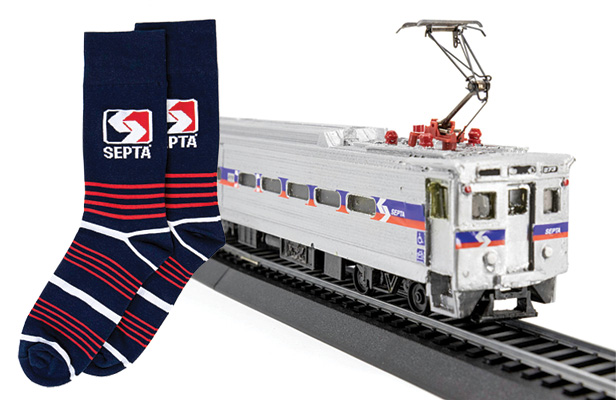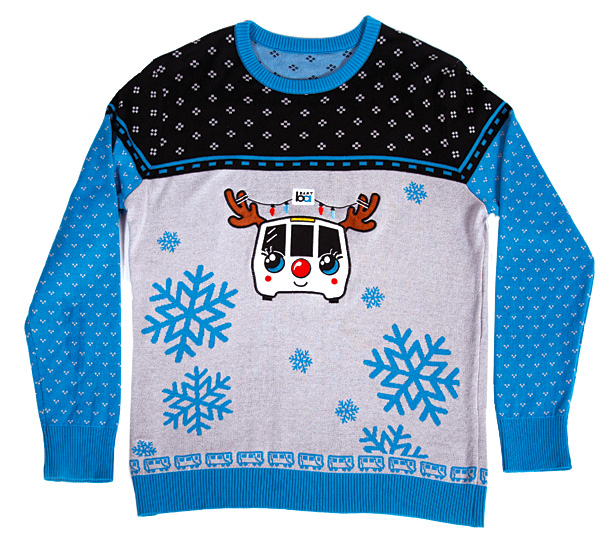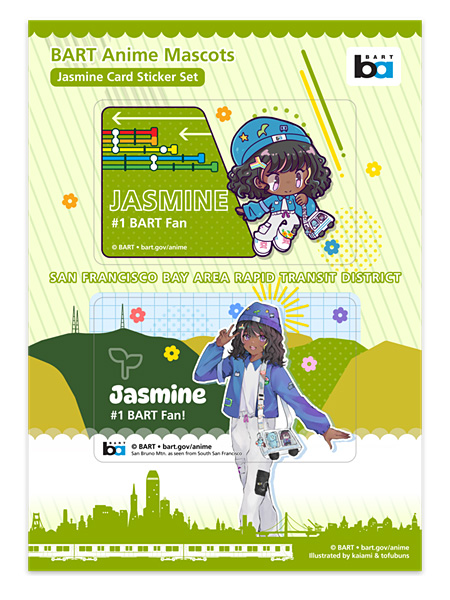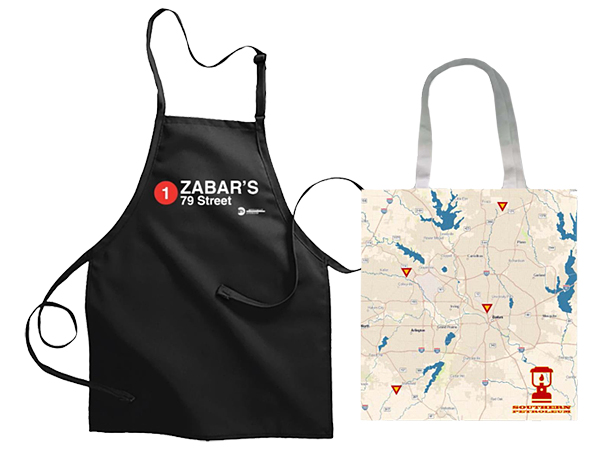Strategy July 26, 2024
All Aboard: Public Transit Merch Rides Into Newfound Popularity
Transportation agencies across the United States are using swag to up brand awareness and convey community pride.
After a tweet about a Philadelphia-themed bar in Tokyo with SEPTA-branded pint glasses went viral last year, the Philly-area transit system was slammed with orders during its Cyber Monday merch sale in November.
Enthusiastic transit fans scrambled for everything from those pint glasses to sweatpants and pajama bottoms. The store had more than 1,000 orders in just three days, says Al’Lee Floyd, manager of the SEPTA store and experiential design.
“Who would have ever thought that we would go viral over sweatpants?” Floyd said. “We literally couldn’t keep them on the shelf until about March or April.”
I lost my mind when I saw SEPTA pint glasses at this Philly bar in Tokyo, so I googled it, and THERE IS A WHOLE LINE AND THEY ARE ALL ON CYBER MONDAY SALE FOR $4.87 PER PINT GLASS https://t.co/31bQiY1z0z https://t.co/ahPEfDwHVJ pic.twitter.com/JWd3icppSA
— Chris OIIey (@chrisoIIey) November 28, 2023
2023 was the SEPTA store’s most profitable year yet, and Floyd said 2024’s profits are already $100,000 ahead of this point last year.
It’s not just Philly that has its merch eye on public transportation.
Transit agencies in most major U.S. cities have online stores that carry everything from model trains to jewelry made from subway tokens.

Now that the sweatpants hype has died down some for SEPTA, the transportation agency’s Al’Lee Floyd says popular SEPTA-branded products include socks and model trains.
But why do people want socks patterned with the SEPTA logo or baby onesies printed with the NYC subway map? Floyd says it’s often about the nostalgia.
In New York City specifically, there’s a history of “line pride,” said Concetta Bencivenga, the director of the New York Transit Museum. People associate themselves with what line they rode or ride – and they want to rep it.
“Somebody will say, ‘I took that subway when I first moved to New York, when I first came to this country, when I first went to college,’” Bencivenga said. “In good times and in tough times, there is this visceral connection between people who live here, people who visit here and our mass transit network.”
The Transit Museum’s store had more than $3 million in sales last year, with their model trains, graphic T-shirts and home décor being particularly popular. The museum is a self-sustaining part of the Metropolitan Transit Authority (MTA), so that money goes directly back to funding the museum’s operations.
For some transit systems, merch sales have become a way to funnel money back into the operating budget. The Bay Area Rapid Transit (BART) system’s annual ugly Christmas sweaters, for example, have become a hot commodity in the Bay Area, said Michelle Robertson, a senior marketing representative for BART.

BART’s fourth annual Christmas sweater is already available for preorder on the Railgoods merch site.
The sweaters started in 2021 as a sweepstakes, Robertson said. But when the BART general manager wore one to a press conference, the agency was bombarded with messages and added a limited run to the store.
“The sweaters – all 150 of them – sold out in less than an hour, and that was that,” Robertson said.
Sales numbers have grown every year since, and the store made more than $100,000 in profit from the thousands of sweaters it sold last year. That doesn’t include any of the other items available on the BART store, ranging from classic T-shirts to a line of anime-themed items that Robertson said BART has been using to appeal to a younger demographic.
“Ridership sadly plummeted during the pandemic, and so we’re trying to get our name back out there – get people remembering that they should be riding,” Robertson said. “And merch is a great way to do that.”

While tabling at FanimeCon, an annual anime convention in the Bay Area, BART made more than $31,000 in profit in one weekend selling anime-themed transit merch.
Promo Opportunities
Beyond marketing for transportation agencies, transit-themed merch also offers a unique opportunity in promo – location-based branding.
While waiting for the #5 train to Brooklyn after work, Lynne Lambert couldn’t help but think how convenient it would be if she could buy T-shirts with the #5 subway signage for her son and his friends as birthday gifts as they turned five that year.
“The subway signage is like the wallpaper of the city,” Lambert said. “You can’t walk more than a block without seeing those big circles – but nobody had ever done anything with them.”

NYC resident Lynne Lambert says that of her NYC Subway Line, items that feature the full subway system, like these vegan leather bags, are the most popular.
After getting one of the first licenses from the MTA, Lambert launched NYC Subway Line – and 28 years later, the line is still going strong.
During the brand’s development, Lambert was always asked at trade shows if she could expand the line to different cities, but she always declined because she didn’t have the inventory space for more products than she already carried.
That’s when she discovered the promotional products industry’s model of printing custom orders rather than having inventory on hand. Soon, she started Map’t Gear, the promo branch of her line.

Lambert takes a creative approach to promo with products featuring customized maps or subway graphics.
For clients in New York, Lambert produces designs that reference the closest subway stop to their business. But she can also map anywhere in the world – particularly popular among corporate clients who use bags branded with a map of their multiple office locations as recruitment tools.
“You don’t have to put a logo on something,” Lambert said. “You have other ways to give your customer something unique and something that helps tell their story.”
